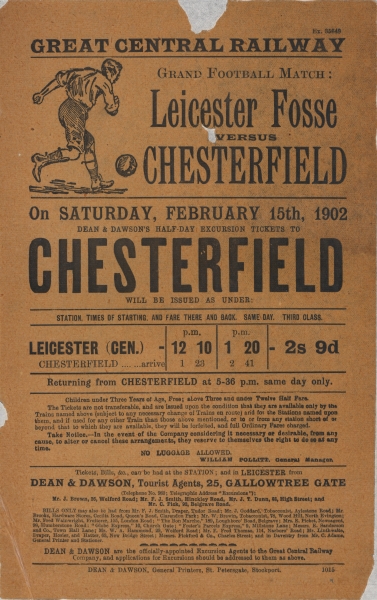The Great Central Railway's London Extension officially opened for traffic on 9th March 1899, although the first public trains did not begin to operate until the 15th. The first train carried only four people, while the second only managed to fill fourteen seats. Quite simply, the new railway was a latecomer, and the Company would have to work hard to win traffic from its rivals. To do this, the GCR needed the motive power and rolling stock to make their railway attractive and, in 1901, the Company appointed John G. Robinson as its Chief Engineer - charging him with the task of producing a fleet of fast and powerful locomotives.
Great Central Railway Class 9J, 0-6-0, No. 228. See Details
Fast trains were not enough and, in 1902, Samuel Fay joined the fold as railway's General Manager. It was Fay's unenviable task to turn the Company's perilous finances around and make the GCR a force to be reckoned with. It worked! Fay's policy of heavy marketing and promotion proved to be effective, and while never a threat to its rivals' existence, the London Extension managed to hold its own against its competitors. Fay then turned his attention to the train services operated by the Company, and by the start of the First World War, these services had been noticeably accelerated in both timing and efficiency.
An example of Sam Fay's marketing was the running of special excursion trains, organised by Dean & Dawson - the company's official travel agent. This hand bill was produced to promote its half-day excursion tickets to Chesterfield - the occasion being Leicester Fosse (now Leicester City) playing in a 'Grand Football Match' on Saturday February 15th 1902. For two shillings and nine pence, fans wishing to go and see the game could catch one of two special services that left Leicester Central that afternoon. See Details
Life slowed down on the railway during the Great War as much of the workforce was conscripted to the armed forces. To aid matters, women were employed to fill many of the gaps, but changes to routine were inevitable. However, by 1922, even bigger changes were afoot for the GCR as the post-war Government had elected to group the Nation's 123 independent railway systems into four 'super' railway companies. The 'Big Four' were born at the start of 1923, and the Great Central Railway was absorbed into the new London & North Eastern Railway.
Great Central Railway timetable booklet See Details










